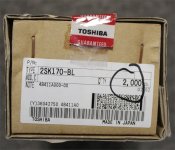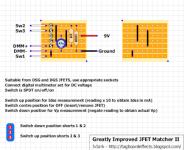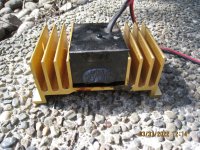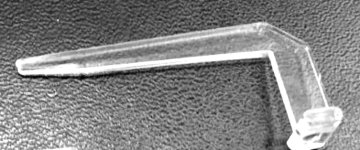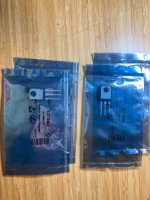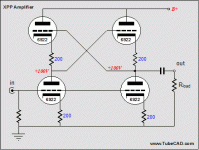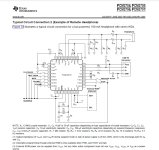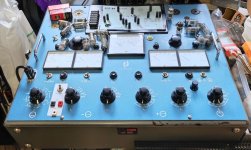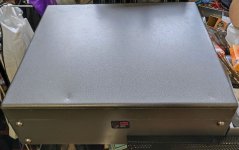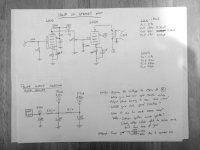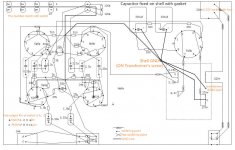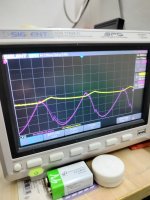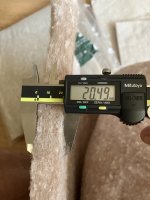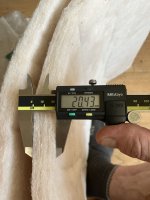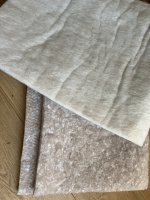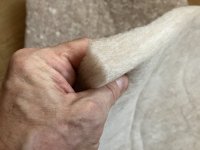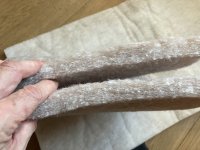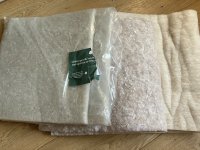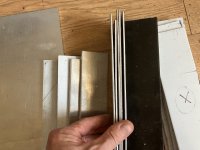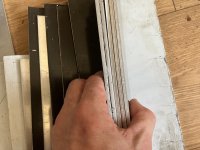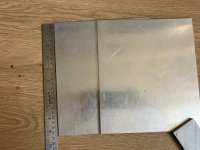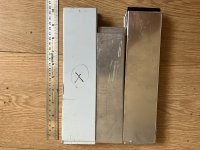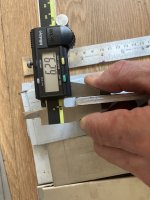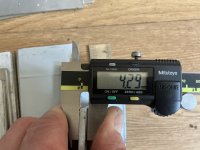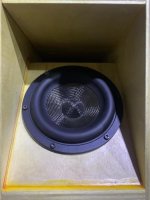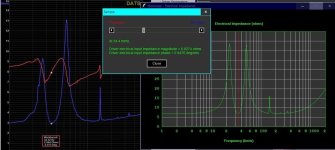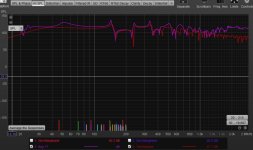Mod SB26ADC for Lower Fs?
Over the years, I've dissected a handful of mostly blown tweeters. The ones with lower Fs are all equipped with a rear chamber. Basically the center portion of the magnet structure inside the voice coil/slot is a hollow tube that goes right through the magnet structure. The backside is closed by a (usually) plastic cap which enlarges the air chamber and seals it behind the dome. Sometimes, these spaces are filled with damping -- poly fiber, foam, etc. -- which appears to lower the amplitude and Fs, if only a touch.
The SB Acoustics SB26ADC is a current DIYAUDIO darling for its good performance & modest price. Equipped with a small rear chamber, my sample of this tweeter has a Fs of 590 Hz with a peak of just 6 ohms ( double the 3 ohm norm). Xmax is rated for1.2mm (p-p), high in comparison to most other tweeters, even larger ones. The Wavecor TW030WA11, for example, a 30mm dome with Fs of 440 Hz, is rated for Xmax 0.4mm (0.8mm p-p).
Here are pics of a disassembled SB26ADC.

Unlike the 29mm series, the 26mm dome/coil appears to be user-replaceable. Clearly visible in the magnet structure is the copper ring inside the slot for the VC/former, the hollow within, and a cone on the inside of the plastic back cover. That cone is probably to reduce standing waves between the dome & the back. No damping material.

This pic shows the back cover; the total depth of the air space behind it might be 4-5mm.
It seems pretty obvious that if the total rear chamber space was enlarged, Fs would drop. Would this allow operation to a lower frequency, especially with a 6" Augerpro waveguide?
I'm want to cross as low as 1200 Hz. The high Xmax of the SB26 might make this safe enough? Or at least 1500 Hz.
The main benefits for me are... better power response in 2-way xover with 8" (or even bigger) woofer, improved dispersion/power to higher frequencies. Plus all the positives we already know about the SB26.
The mod itself looks like it should not be difficult: Pry the plastic back cover off and replace it with a half ( or smaller) portion of a hard plastic ball of suitable size. Fill it with poly or wool fibers to control resonances. I'm tempted try but would prefer not to destroy the back cover.
Thoughts anyone?
The SB Acoustics SB26ADC is a current DIYAUDIO darling for its good performance & modest price. Equipped with a small rear chamber, my sample of this tweeter has a Fs of 590 Hz with a peak of just 6 ohms ( double the 3 ohm norm). Xmax is rated for1.2mm (p-p), high in comparison to most other tweeters, even larger ones. The Wavecor TW030WA11, for example, a 30mm dome with Fs of 440 Hz, is rated for Xmax 0.4mm (0.8mm p-p).
Here are pics of a disassembled SB26ADC.
Unlike the 29mm series, the 26mm dome/coil appears to be user-replaceable. Clearly visible in the magnet structure is the copper ring inside the slot for the VC/former, the hollow within, and a cone on the inside of the plastic back cover. That cone is probably to reduce standing waves between the dome & the back. No damping material.
This pic shows the back cover; the total depth of the air space behind it might be 4-5mm.
It seems pretty obvious that if the total rear chamber space was enlarged, Fs would drop. Would this allow operation to a lower frequency, especially with a 6" Augerpro waveguide?
I'm want to cross as low as 1200 Hz. The high Xmax of the SB26 might make this safe enough? Or at least 1500 Hz.
The main benefits for me are... better power response in 2-way xover with 8" (or even bigger) woofer, improved dispersion/power to higher frequencies. Plus all the positives we already know about the SB26.
The mod itself looks like it should not be difficult: Pry the plastic back cover off and replace it with a half ( or smaller) portion of a hard plastic ball of suitable size. Fill it with poly or wool fibers to control resonances. I'm tempted try but would prefer not to destroy the back cover.
Thoughts anyone?
